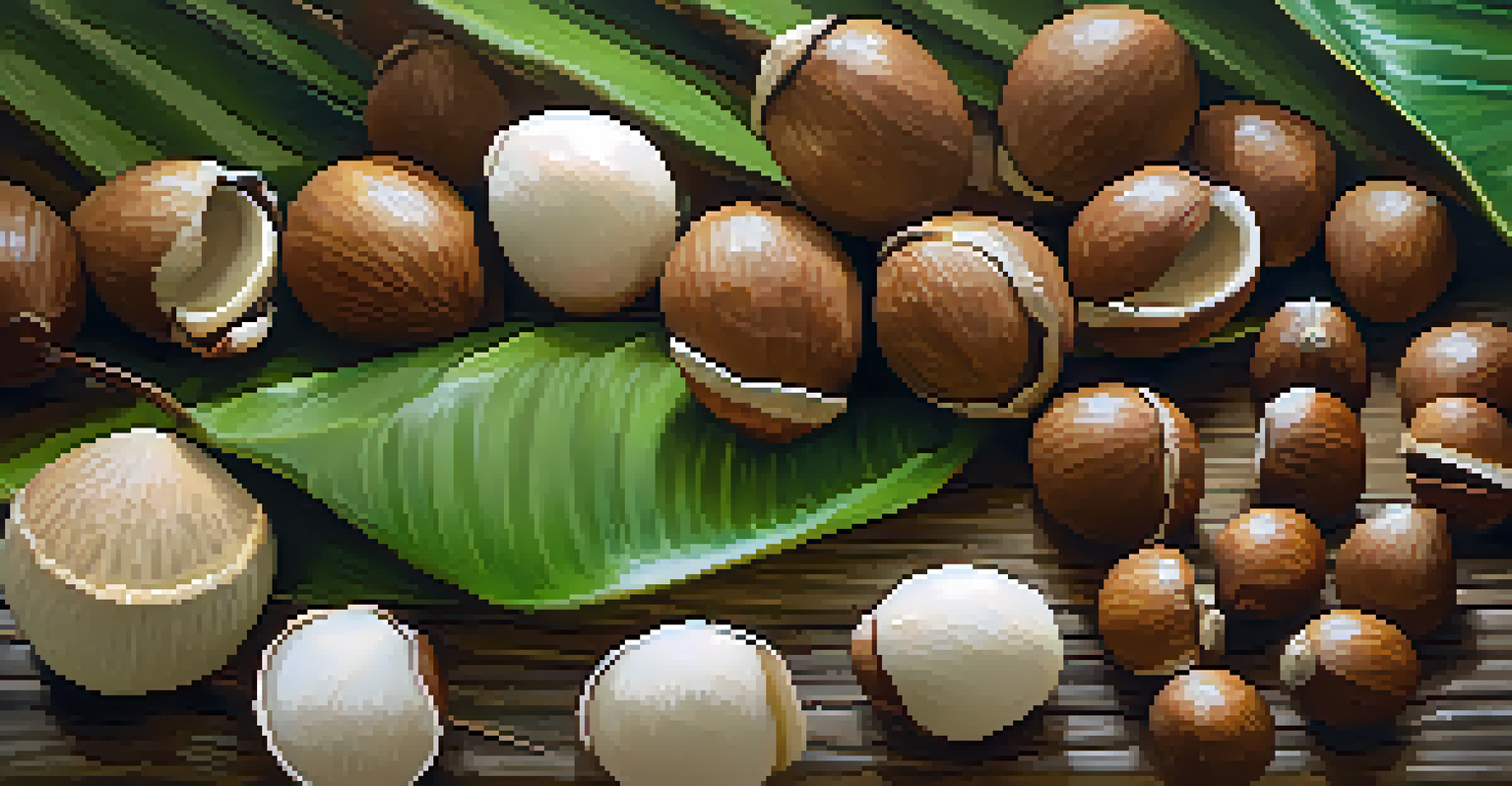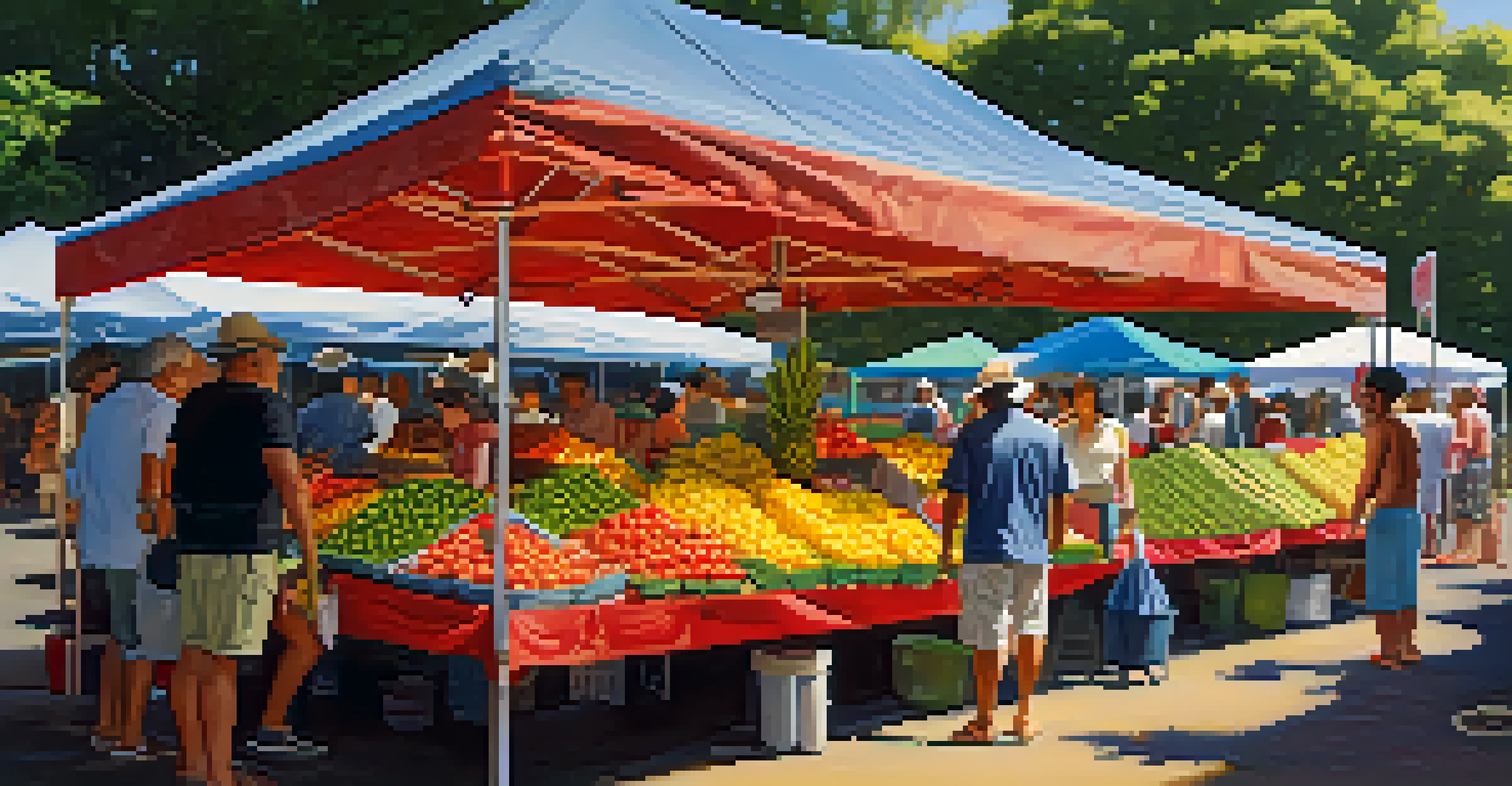Hawaii's Crop Diversity and Its Economic Impact on Communities

Understanding Hawaii's Unique Agricultural Landscape
Hawaii's geography and climate create a unique environment for agriculture, allowing a wide range of crops to flourish. From the lush volcanic soil to the warm tropical weather, the islands support both traditional and exotic plants. This diversity is not just visually appealing; it plays a crucial role in Hawaii's economy and cultural identity.
Agriculture is the most healthful, most useful, and most noble employment of man.
Many of these crops, such as taro and sugarcane, have deep cultural significance for Native Hawaiians and are integral to traditional practices. As a result, preserving these plants goes beyond economic considerations; it's about honoring heritage and sustaining the community. By understanding this relationship, we can appreciate the importance of crop diversity.
Moreover, Hawaii's agricultural landscape is constantly evolving. New crops are being introduced, and traditional farming methods are being revitalized, leading to a dynamic agricultural sector that continuously adapts to changing markets and consumer preferences.
Key Crops Contributing to Hawaii's Economy
Hawaii is renowned for its coffee, macadamia nuts, and tropical fruits, all of which contribute significantly to the local economy. Hawaii's coffee, especially from regions like Kona, has gained international acclaim, attracting tourists and coffee enthusiasts alike. This has created jobs and supported local farmers, enhancing the economic fabric of the islands.

In addition to coffee, macadamia nuts are another cash crop that generates substantial income for farmers. With increasing demand both locally and globally, these nuts have become a staple in Hawaii's agricultural exports. This economic boost helps fund community initiatives and supports local businesses, creating a ripple effect throughout the economy.
Hawaii's Agriculture Drives Economy
Key crops like coffee and macadamia nuts significantly contribute to Hawaii's local economy and create job opportunities.
Tropical fruits like pineapple, papaya, and lychee also play a vital role in Hawaii's agriculture. These crops not only cater to the tourism industry, which thrives on fresh, local produce, but they also encourage sustainable farming practices that benefit the environment and local communities.
The Role of Sustainable Practices in Crop Diversity
Sustainability is becoming increasingly important in Hawaii's agricultural practices. Farmers are adopting organic and sustainable methods to grow a variety of crops, which not only protects the environment but also meets the growing consumer demand for eco-friendly products. This shift helps to preserve Hawaii's natural resources while ensuring the long-term viability of its agriculture.
The future will be green, or not at all.
For instance, crop rotation and intercropping are techniques that help maintain soil health and reduce pest outbreaks. By diversifying the types of crops grown, farmers can create a more resilient agricultural system, capable of withstanding environmental changes. This diversity also enhances food security for local communities, reducing dependence on imported goods.
Furthermore, sustainable practices often lead to better quality produce, which can fetch higher prices in the market. This not only benefits farmers but also strengthens local economies, demonstrating that sustainability and profitability can go hand in hand.
Economic Impacts on Local Communities
The economic impact of crop diversity extends far beyond just farming. It creates jobs in various sectors, including retail, transportation, and tourism. For instance, local farmers' markets and farm-to-table restaurants have become popular, supporting not just the agricultural community but also local businesses and artisans.
Additionally, agricultural tourism, or 'agri-tourism,' allows visitors to engage directly with Hawaiian agriculture. Tours, tastings, and farm stays provide a unique experience while generating income for farmers and local communities. This not only boosts the economy but also fosters a greater appreciation for Hawaii's rich agricultural heritage.
Sustainability Enhances Crop Diversity
Farmers in Hawaii are increasingly adopting sustainable practices that support crop diversity while meeting consumer demand for eco-friendly products.
Moreover, the cultivation of diverse crops helps maintain the cultural identity of the islands. By promoting local produce, communities can celebrate their unique flavors and traditions, ensuring that future generations remain connected to their agricultural roots.
Challenges Facing Hawaii's Agricultural Sector
Despite its many advantages, Hawaii's agricultural sector faces significant challenges. Climate change poses a threat to crop yields, with rising temperatures and changing rainfall patterns impacting farming practices. Farmers must adapt to these changes to sustain their livelihoods and continue contributing to the local economy.
Moreover, competition from imported goods can undermine local farmers. With many consumers opting for cheaper, mass-produced products, local crops sometimes struggle to compete. This situation highlights the necessity of promoting local agriculture and encouraging consumers to support homegrown products.
Additionally, land use conflicts are a growing concern. As development pressures increase, agricultural land is often converted for housing or commercial use, reducing the space available for farming. Addressing these challenges is crucial to maintaining Hawaii's agricultural diversity and economic health.
The Future of Crop Diversity in Hawaii
Looking ahead, the future of crop diversity in Hawaii is promising but requires strategic planning and collaboration. Initiatives that support local farmers, such as grants and training programs, can help promote sustainable practices and encourage the cultivation of diverse crops. This approach not only benefits the farmers but also strengthens the overall agricultural sector.
Furthermore, increased awareness and education about the importance of local agriculture can drive consumer demand for Hawaiian products. By fostering a culture of support for local farmers, communities can help sustain agricultural diversity while boosting the local economy.
Challenges Threaten Farming Communities
Climate change, competition from imports, and land use conflicts pose significant challenges to Hawaii's agricultural sector.
In addition, innovation plays a critical role in the future of agriculture in Hawaii. Embracing technology, such as precision farming and eco-friendly pest management, can enhance crop yields and reduce environmental impact. By combining traditional practices with modern techniques, Hawaii can ensure a thriving agricultural future.
Conclusion: Celebrating Hawaii's Agricultural Heritage
In conclusion, Hawaii's crop diversity is not just an agricultural trait; it's a vital part of the islands' cultural and economic identity. By understanding the significance of diverse crops and supporting sustainable practices, communities can work together to strengthen Hawaii's agricultural sector. This collaboration will help preserve the rich heritage of the islands for future generations.
As we celebrate Hawaii's unique crops, let's remember the individuals behind them—the farmers, families, and communities that contribute to this vibrant agricultural landscape. Their dedication not only nourishes the local economy but also maintains the cultural essence of the islands.

Ultimately, recognizing and valuing the importance of crop diversity in Hawaii will lead to a more resilient and prosperous future, ensuring that the islands continue to thrive in harmony with their natural environment and rich traditions.